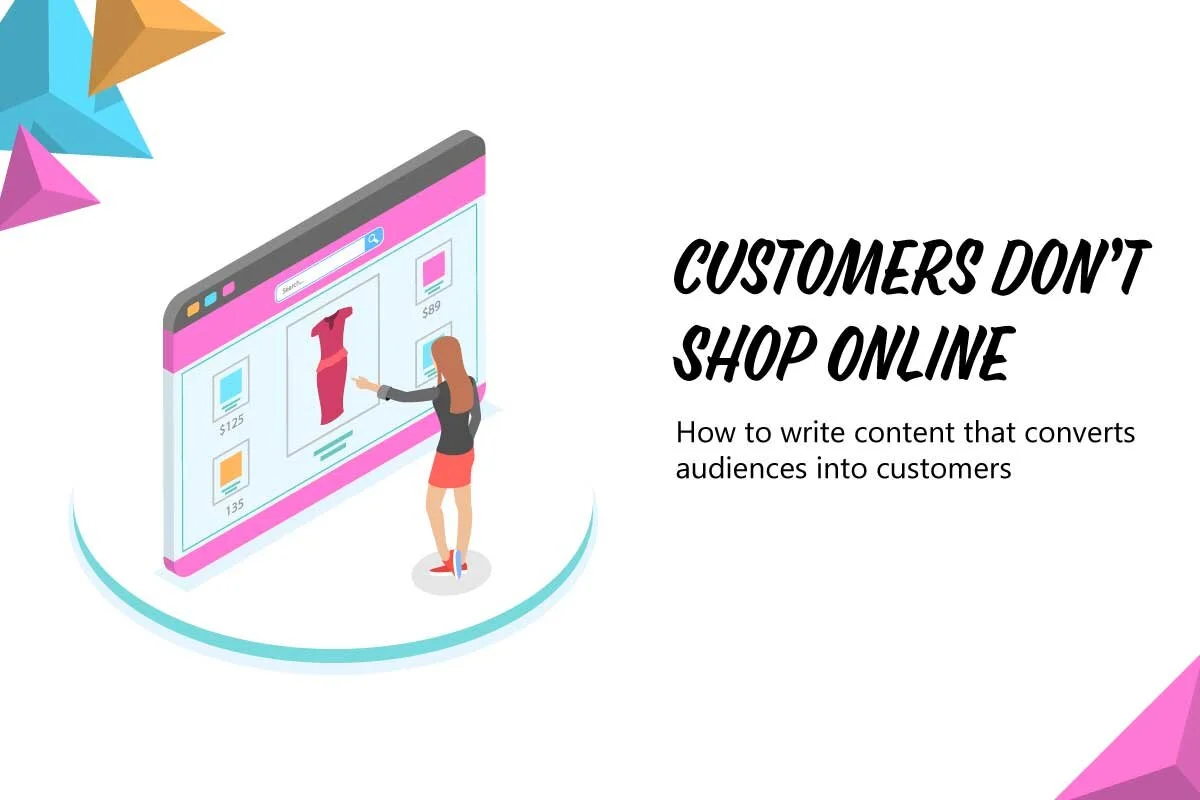Customers Don’t Shop Online
Business owner: “How do we create content that works on social media?”
Me: “What do you want to accomplish?”
Business owner: “Increase sales.”
Me: “Of what?”
Business owner (with a confused look): “Everything!”
This is a conversation that I consistently have with business owners and managers, and I totally get it. I was a salesperson before I became a digital marketer. I know that you can’t keep the lights on without selling stuff. But there’s an important fact to understand, and you probably won’t like it: You can’t sell anything on digital platforms.
Please, don’t get me wrong, you can definitely use websites and social media to sell products and services. However, traditional sales tactics don’t work online. Why? Because customers don’t exist online. Do you use Facebook or Instagram to look at advertisements? Most likely not, and most people don’t either.
You might ask, “What if people go to my website? Aren’t they shopping? Aren’t they customers?” Sorry, but no, they’re not customers. You see, when people go online, they become media consumers. This means that they are now a part of an audience.
Think of it this way, window displays are meant to encourage people to enter a store in hopes that they become customers. Using this logic, your website is a virtual window display, so your visitors are just window shopping until they decide to make a purchase.
But, there’s good news. Now that we understand that customers don’t shop online, we can focus our efforts to create content that attracts audiences and persuades them to become customers. How do we do that? By developing messages and stories that are important to your audience.
It’s not enough to simply take a photo of a product and write a generic caption like, “Just got this in, and we love it!” Instead, you must appeal to your audience’s emotions by informing them how the product will solve their problem. And it’s important to do it in a way that grabs and retains attention. Here’s a quick example of what I mean:
“We know that this problem is difficult, and there are many people that need a solution. We are happy to introduce this new product. Give us a call or send us a message if you would like to know more.”
See what happened here? We introduced a problem, we created a community by stating that “there are many people that need a solution”, we introduced a solution, and we provided a clear call to action.
Realizing that customers don’t shop online is the first step toward creating content that connects with people and develops messages that give value to your followers; and this is what persuades audiences to convert into customers.
